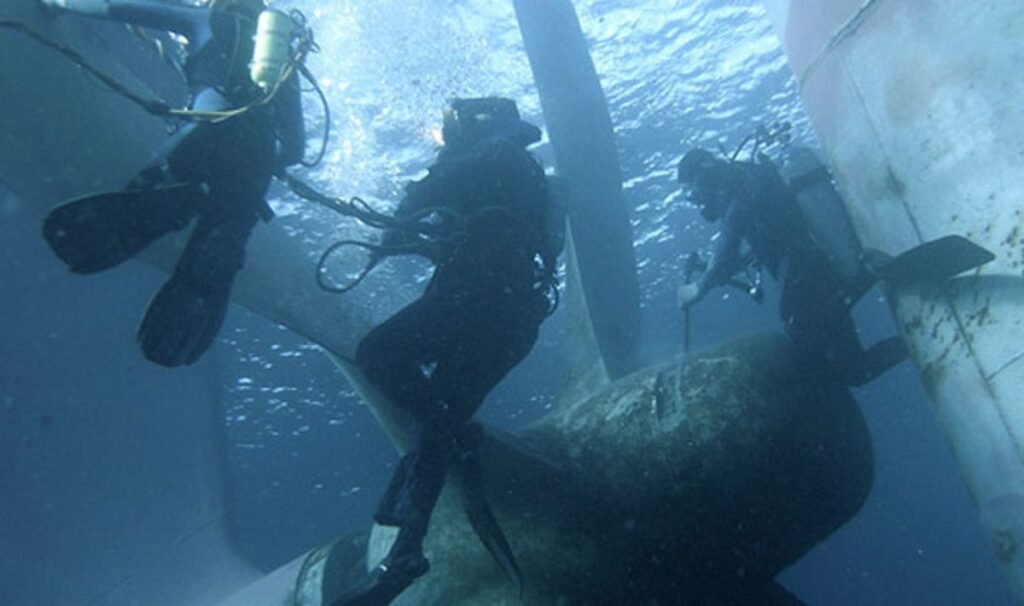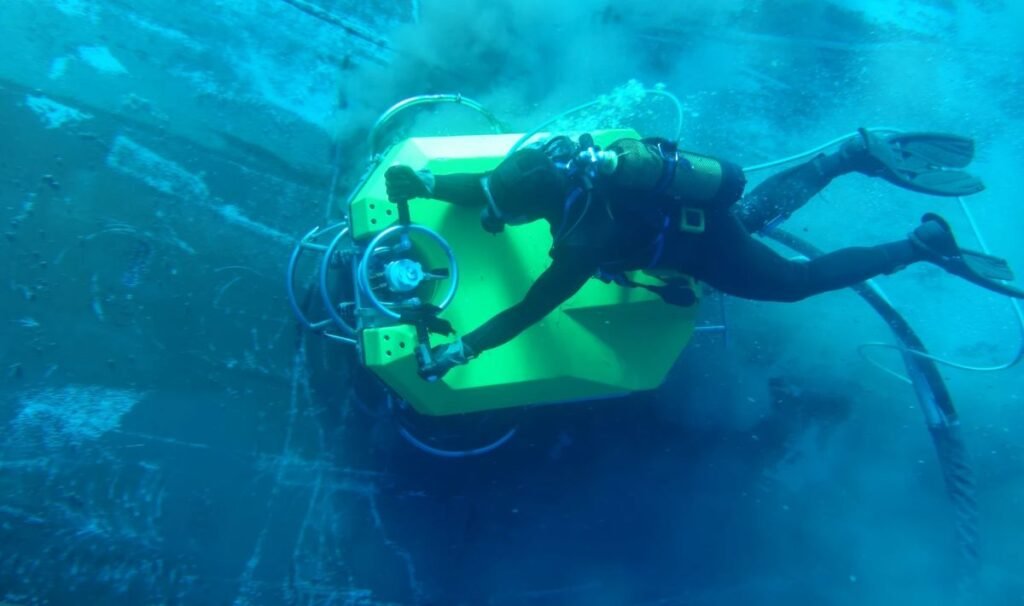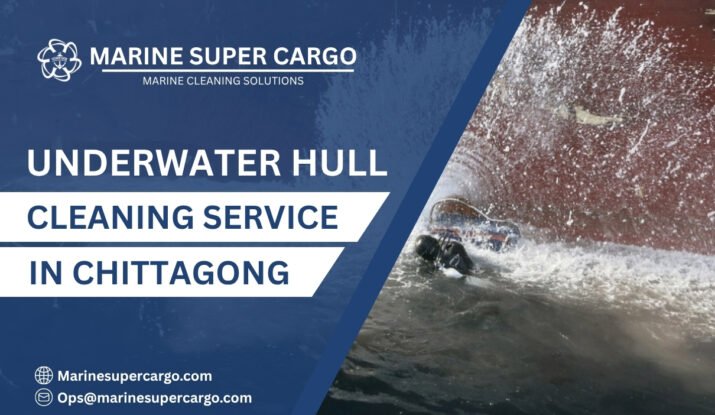Imagine your vessel as a marathon runner. Now, picture that runner with mud-caked shoes, slogging through every step. That’s what happens when your ship’s hull is covered in barnacles, algae, and debris. In the bustling port city of Chittagong, where the Karnaphuli River meets the Bay of Bengal, underwater hull cleaning in Chittagong isn’t just routine maintenance—it’s the secret to smooth sailing, fuel savings, and environmental responsibility.
What Is Underwater Hull Cleaning?
Underwater hull cleaning is the process of removing marine growth, slime, barnacles, and debris from the submerged surfaces of a vessel, without the need for dry-docking. Skilled divers or remotely operated machines scrub away biofouling, restoring your ship’s hydrodynamic efficiency and extending its lifespan.
The Unique Challenges of Chittagong’s Waters
Chittagong’s warm, nutrient-rich waters are a haven for marine life—and a headache for shipowners. Rapid biofouling is common, and the Karnaphuli River brings not just silt, but also plastic, fishing nets, and other debris that can entangle propellers and clog intakes. The result? Ships operating here need more frequent and thorough underwater hull cleaning than in many other ports.
How Biofouling Impacts Vessel Performance and Costs
Think of biofouling as a silent thief. Even a thin layer of slime can increase drag, forcing engines to work harder and burn more fuel. Heavy fouling can slow a ship by up to 30% and spike fuel consumption by 10% or more. For commercial fleets, that means higher operational costs and increased emissions—bad news for your bottom line and the environment.

The Underwater Hull Cleaning in Chittagong
Let’s dive into how underwater hull cleaning in Chittagong works:
Initial Inspection and Assessment
Before any cleaning begins, a thorough inspection is performed—often using underwater CCTV cameras. Divers or ROVs (remotely operated vehicles) check for damage, assess the level of fouling, and identify areas needing special attention. This step ensures the cleaning process is safe and effective.
In ports like Chattogram, where safety and efficiency are paramount, inspections are often carried out in alignment with guidelines from the Chattogram Port Authority (CPA), ensuring that all underwater maintenance activities meet national safety and operational standards.
Cleaning Techniques: Divers, ROVs, and Equipment
- Divers: Certified professionals equipped with brushes, scrapers, and hydraulic tools manually remove growth from the hull, propellers, rudders, and niche areas.
- ROVs and Machines: Advanced cleaning machines like multi-brush karts or ROVs can clean large surfaces quickly and safely, protecting both divers and hull coatings.
- Specialized Tools: Modern providers use eco-friendly, pressure-adjustable brushes and vacuum systems to prevent damage to antifouling paints and minimize debris release into the water.
Eco-Friendly Approaches and Debris Removal
Sustainability is a growing priority in Chittagong’s maritime industry. Leading companies use environmentally friendly techniques and real-time video monitoring to ensure thorough cleaning without harming marine life. Divers also remove plastic, ropes, and fishing nets entangled around propellers, helping both your vessel and the ocean.
Choosing a Professional Hull Cleaning Service in Chittagong
With so much at stake, choosing the right team for underwater hull cleaning in Chittagong is crucial.
What to Look for in a Provider
- Experience: Look for companies with a proven track record in Chittagong’s challenging waters.
- Technology: Modern equipment and real-time video monitoring ensure thorough, safe cleaning.
- Availability: Top providers offer 24/7 service and fast mobilization to minimize your downtime.
Certifications, Compliance, and Safety
Reputable services follow international standards and comply with local environmental regulations. Certifications from paint manufacturers and adherence to IMO guidelines help protect your vessel’s coatings and ensure regulatory compliance.
How Often Should You Clean Your Hull?
There’s no one-size-fits-all answer, but in Chittagong’s fast-fouling waters, most vessels benefit from cleaning every 3 to 6 months. Regular inspections can help you catch growth early and avoid costly surprises.
Cost Factors for Underwater Hull Cleaning in Chittagong
The price of underwater hull cleaning in Chittagong depends on several factors:
- Vessel Size: Larger ships require more time and resources.
- Level of Fouling: Heavily fouled hulls take longer to clean.
- Service Provider: Quality and technology come at a price, but the savings in fuel and maintenance quickly outweigh the cost.
DIY vs. Professional Hull Cleaning: Risks and Rewards
DIY hull cleaning might seem tempting, but without the right tools, training, and insurance, it’s risky. You could damage your vessel, void paint warranties, or even endanger yourself. Professionals bring specialized equipment, expertise, and safety protocols, making them the smart choice for any serious shipowner.

Innovations and Trends in Hull Maintenance
The future of underwater hull cleaning in Chittagong is bright and green. Expect to see more robotic cleaning systems, advanced debris recovery technology, and eco-friendly cleaning agents. These innovations promise faster, safer, and more sustainable service for all types of vessels.
Conclusion: Keeping Your Vessel Efficient and Sustainable
Underwater hull cleaning in Chittagong is more than just a maintenance chore—it’s an investment in your vessel’s performance, your bottom line, and the health of the ocean. By partnering with experienced professionals, embracing new technology, and sticking to a regular cleaning schedule, you’ll ensure your ship sails smoothly, efficiently, and sustainably. Next time your vessel glides through the busy waters of Chittagong, you’ll know it’s not just moving forward—it’s leading the way.


